I am a 1911 fan — not exactly a junkie, but I’ve owned several over the years. The 1911 is a high-priced, high-complexity firearm that fires a huge, powerful caliber bullet. Taurus firearms are well recognized as being among the most reasonably priced in the industry, and their 1911 model is no exception. Here, we’ll review the Taurus PT 1911. Let’s begin.
I’ve written a few articles on 1911s and related topics. Among them are the best 1911 for the money, best 1911 in 9mm, best budget 1911, Colt Combat Commander, Colt Delta Elite, and one of the best .45 ACP ammo.
The reason I mention these is that there is much information in these articles that you may want to peruse after reading this. (I mentioned the Taurus PT1911 in at least two of these articles). Now, let’s look at where the 1911 came from.
BONUS OFFER: Get your free shooting range targets to print at home!
Get your free targets to print at home!
Quick History of the 1911 Pistol
The 1911
The Army was unhappy with the performance of the .38 Long Colt during the Philippine Insurrection (otherwise known as the Filipino-American War). This bid for Philippine independence from the U.S. began in 1896 and turned into a large-scale shooting war in February, 1899.
Our troops found out the hard way that the Long Colt would not stop Moro and other tribesmen who bound their torsos tightly in grass, creating a form of organic body armor. (They were also said to be “chemically enhanced” on some sort of natural drug that masked pain, but I can’t prove that It’s just interesting).

The old .38 just wasn’t up to the task — tribesmen would take one or more bullets but then proceed to get to the soldiers with their edged weapons and create havoc, so we broke out the old .45 Colt Peacemakers that had been mothballed. That did the trick. (Side note: most of these guns’ barrels had been shortened two inches, from 7.5 to 5.5. I guess it made them handier).

With the results from that fracas fresh in memory, the Ordnance Board set out to adopt a new pistol that would have greater stopping power than the .38 Long Colt. In 1904, Major John Thompson (of “Tommy Gun” fame) and medical officer Major Louis LeGarde embarked on a series of experiments to see what worked best in terms of stopping power and tissue disruption.
They used donated human cadavers, live cattle, and other targets to test the ammunition’s effectiveness –grisly, but it gave them the data they needed. The Army eventually adopted the New Service revolver, caliber .45 Colt, in 1909 as the official sidearm before the M1911’s adoption came about a couple of years later.

In the end, the Thompson-LeGarde board recommended a bullet that “should not be of less than .45 caliber” and be fired from, of all things in 1904, an auto-loading pistol. That was certainly forward-thinking on their part.
The Ordnance Board received test guns from six companies originally but narrowed it down to three: Savage, Colt and DWM (Germany). They sent a Luger P08 in .45 caliber. Now, THAT is interesting: a Luger in all those holsters down through the years instead of the Colt 1911.
Anyway, it came down to the Savage and the Colt, with the Colt being the eventual winner. Each gun was tested and one of those tests (in late 1910) involved shooting 6,000 rounds over 2 days. John Browning himself attended this test.
The Colt got so hot they had to dunk it in water, but it came out of the test with zero malfunctions. The Savage had 37. For this and other reasons, the Colt was adapted — the Model of 1911 (later just M1911) .45 ACP semi-automatic pistol. It was originally meant to shoot a .45 caliber 200-grain FMJ round-nose bullet, but that was later upped to one that weighed 230 grains. The tests went on from 1907 to 1911, with the Colt coming out on top.

Adopted on March 29, 1911, it served as our nation’s official sidearm until 1985. It was, at that time, replaced by the Beretta M9 but several special ops groups continue to use a 1911 of some form to this day. Plus, we all know how popular they are among civilians. It is one gun that has proven itself many times over, from the early days to today. Over 100 years young, it just keeps on keeping on.
All this leads us to modern 1911. Although construction materials and methods used are different than they were when the pistol first appeared, its basic function hasn’t changed in 108 years. John Browning designed the pistol around a short-recoil, tilting-barrel action to be fed from a single-stack magazine. It was destined to go down in history as one of the most reliable, successful, and popular pistol designs ever.
Enter Taurus
Taurus is a company based in Brazil, but with growing interests in the U.S., They are building a 200,000-square-foot plant and headquarters in Bainbridge, Georgia. Until this facility is completed, their U.S. base will remain in Miami, Florida. You can read more about the history of Taurus in my review of the Spectrum .380.
S&W and Beretta
Taurus was, at one time, owned by the parent company (Bangor Punta Corp.) that owned Smith and Wesson. Therefore, each of these firearms manufacturers had legal access to the designs and plans of the other, which explains why some Taurus pistols look like Smith and Wessons. They also bought, when Beretta left Brazil, that Italian companies’ holdings in São Paulo, which explains why the Taurus PT92 looks so much like the Beretta 92.
Popular Articles
Taurus PT1911 Variations
Introduced at the 2005 SHOT Show, the blued PT1911 began appearing on dealers’ shelves later that year, with a stainless version coming along in 2007. Taurususa.com now shows ten different variations of their 5-inch full-size model (9 of which are in .45, with one in 9mm).
They also show ten different Commander-length-(or at least 4.2-inch)-barreled variations, with one more in 9mm and they have even fairly recently introduced four Officers Models (3.5-inch barrel) in .45.
The capacities are 8+1 rounds, full-size, and Commander, with the Officer’s Model coming at 6+1. You should be able to find something that would work with that variety. Here is a listing of the specs and features of the stainless model I tested.
Stainless PT1911 Specifications and Features:
| Height: | 5.5 inches |
|---|---|
| Width: | 1.5 inches |
| Weight: | 42 ounces |
| Overall Length: | 8.5 inches |
| Barrel: | 5.0 inches with conventional bushing and full-length recoil spring guide rod |
| Sights: | Front and Rear, 3-Dot Novak Drift-Adjustable, with included Allen wrench to loosen setscrew |
| Safeties: | Firing Pin Block, Grip Safety (beavertail with memory bump), Manual (Thumb) Safety -- extended and ambidextrous (ambi safety only on full-size models, not on Commander or Officer models) |
| Ejection Port: | Lowered and flared |
| Slide Serrations: | Front & rear |
| Trigger: | Adjustable for over-travel, skeletonized |
| Grip Checkering: | 30-lpi on front strap and flat mainspring housing |
| Grip Panels: | Black plastic, diamond-pattern |
| Feed Ramp: | Polished, with polished barrel throat. Corresponding frame area polished |
| Hammer: | Target, Commander-style rowel |
| Magazines: | Two matt black Mec Gar 8-round magazines with extended base plates and flat followers; witness holes on both sides |
| Mag Well: | Beveled |
| Finish: | Matt stainless with polished controls |
| MSRP: | $752 |
| Real-World: | ~$570* |
| Warranty: | Limited Lifetime to original purchaser |
Pricing depends on finish and construction materials. You really need to check the website to see all the different variants of these 1911s.
Taurus listened to customer feedback during the design phase of this pistol. They made some wise decisions, one of which was to include actual Novak sights. I also appreciate the ambi thumb safety, but I do understand that a lot of you don’t like them for whatever reason. It just makes it easier on those of us who shoot left-handed.
The beveled mag well, lowered and flared ejection port, beavertail with memory bump, polished feed ramp and throat, fine checkering on the back- and front straps, adjustable trigger. These features came only on custom builds or used to cost more from the factory.
I didn’t mention the full-length guide rod because, like the ambi safety as the jury is still out on that for at least some shooters. (If you don’t want the ambi safety, you can buy a Commander or Officers model). The point of all this is that you get a lot of features for the money, and that gun has some pretty nifty enhancements.
BONUS OFFER: Get your free shooting range targets to print at home!
Get your free targets to print at home!
Taurus PT1911 Photos
Let’s look at some photos of the gun, and examine some of the features included.




Close-up of the black plastic diamond-pattern grips. I like the new logo, and the hex key screws.

If you read my Delta Elite review, you’ll see that Colt experienced some very early frame cracking with that 1911 10mm, so they just cut away the part of the frame that was susceptible to fracture stress cracks. They migrated that cut to the rest of their line.
You can see how Taurus has not cut the frame away all the way to the slide rail like some makers do. They left an “arch” opening in the frame. This works well for them, as I haven’t heard of Taurus 1911 frames cracking at this point.

Speaking of the frame, here are the front- and backstraps with the 30 lpi checkering that’s well-executed.


Here’s the underside of the slide. I could see no obvious machining marks.

Barrel feed ramp. This is highly polished, as is its counterpart in the frame. This is the best polish job I’ve seen on any Taurus pistol I’ve examined.


The barrel and attendant parts. The guide rod is full-length but is not like others that I’ve seen (where you need to place a paperclip in the hole provided to take stress off the spring). It takes down like 1911s that use the original-length rod. The bushing was a tight fit and a wrench is included.

The guide rod end. Nicely finished. Notice the staking job.

Here’s the hammer and thumb safety. It’s rowel-style hammer that’s nicely serrated. Also, there’s an internal extractor. The beavertail grip safety covers the hammer fully, so no bite here. The extractor end shows as black here, but that’s just the lighting. It is bead-blasted silver like the rear of the frame (see rear sight photo below).
Speaking of beavertail.

The memory bump is just big enough without getting in the way.

Rear sight. The sights are for-real Novak. They are drift-adjustable with an Allen-wrench-head setscrew which was included in the box.


The trigger has an overtravel adjustment screw access hole in its face that takes an Allen wrench. I measured the pull weight with my new Lyman digital trigger pull gauge. It came out to a 10-pull average of 4 pounds, 6.5 ounces. Not bad for a stock, factory trigger.


The magazine well is beveled a bit. This beveling does help with magazine insertion. Notice the steel mainspring housing. One thing they could change — note the sharp corners of the frame bottom just ahead of the bevel cut. These are very sharp, and uncomfortable with the grip I use. I would relieve those pointy edges.



Frame engraving. Not too much, but for some folks, ANY engraving is too much. Here is a decent compromise amount. Serial numbers are edited out here but they are matching. It shows that the slide, frame and barrel start out their journey through the factory together and are fitted as one unit.


And, last but not least, the nicely-padded polymer box it comes in. They’ve upped their game with the boxes they include now. This one will protect the gun.
What’s in a Taurus PT1911 Box
Here’s what else was in the box.
- Some very stiff foam padding, nicely sculpted for the gun and accessories
- The ubiquitous “bicycle” keyed padlock
- Allen wrench for sight adjustment
- Owner’s manual (seems to be newly revised)
- Warranty reminder
- Chamber flag
- Two 8-round magazines
Taurus has, as I said above, has really stepped their game up in recent months. This pistol is a good example of that. I owned a blued 1911 of theirs a few years ago, but it wasn’t as nice as this one. It seems like they’re paying more attention to fit and finish than they did before. This is a good thing, as they needed to do that.
BONUS OFFER: Get your free shooting range targets to print at home!
Get your free targets to print at home!
Shooting the Taurus PT1911
I shot this gun with a few loads, which worked very well. It is winter here (as of writing, on the north half of our Big Blue Ball), and we have snow on the ground. I tend to get lazy when I shoot an autoloader over snow. I lay a tarp out to catch the brass and don’t spend as much time outdoors as I would if it were warmer. With that said, I shot a quick target or two with my favorite handload — 5.3 grains of 231/ HP38 under a Lee 200-grain H&G 68-style cast semi-wadcutter.
If you are a .45 ACP reloader, you are (or should be) familiar with this bullet. It is the standard by which a lot of .45 loads are judged. Short of the 230-grain round-nose, this bullet is one of the most-used in this caliber. Here’s a drawing of the accuratemolds.com version of it. Their numbering system shows 69, but rest assured, it’s the tried & true H&G 68, no matter what they call it. A truncated cone nose with a full-diameter cutting band that makes clean holes in targets and is easy to load — that’s why I shoot it. It just works.

The Lee version has a slight bevel base but is otherwise the same. I use Lee liquid alox or powder coating on the cast bullets, and they work well. Out of this gun, that target loading produced about 840 fps. Here’s one of the targets.

This was shot standing (not from a bench) with a center hold, so I’ll take the results. A Jerry Miculek or John Taffin, I’m not. Any time I can get anything resembling a group and not a pattern in the winter, that’s a good thing. As you can see, it would work for practice. This gun is capable of far greater accuracy than I am. I must remember that it’s about the gun, not the ammo. Suffice it to say, this gun is a shooter — you could do worse.
Shooting Results
Here are a few hits and misses.
__#Excellent trigger.__It didn’t need any adjustment. It broke at four pounds, six and a half ounces with little take-up and no creep and very little overtravel. If it were mine, I’d adjust the stop screw, but it wouldn’t need much. __#Sights.__The Novaks performed as they usually do, very well. With good visibility and factoring in the windage adjustability, we have a winner. __#Safety.__The ambi thumb safety worked as advertised, with a positive “snick” when engaged or released. The levers are just the right size, at least for me. __#Slide release.__I know, it’s a 1911. How could they mess that up? However, I’ve shot some of this type of pistol that made the slide release inaccessible due to its size or shape. This one is just long enough without getting in the way. __#Accuracy.__I know, it’s a 1911. How could they mess that up? However, I’ve shot some of this type of pistol that made the slide release inaccessible due to its size or shape. This one is just long enough without getting in the way.One downside is those pesky points at the front of the mag well. I caught my hand on them more than once. But that’s an easy fix were the pistol mine.
Taurus PT1911 Field Strip
Here’s a video I found showing how to field strip this gun.
Wrap Up
I really like this gun. I sure think you could do worse for your hard-earned buck, with its street price of $500 or so (less, with the matte black finish). Those of you who are regular readers know that I am a fan of Taurus, for the most part, and since they are trying to turn their reputation around, things are getting better.
If you are in the market for a lower-end-of-the-price-range-1911, give the PT1911 a look. No matter if you want one in blue or stainless, you’re covered. There are other finishes available, as are Commanders and Officers Models.
This gun’s main competition at this price point would be the Rock Island Armory line of 1911s. I’ve owned both, and really like both, but after shooting this Taurus I am really impressed with what I call its “shelf image.” That is what it looks like as it reposes in a dealer’s gun case. This gun would garner attention with its matte stainless finish and very shiny, polished controls.
Check one out the next time you’re at your favorite gun shop. Please leave a comment below about the PT1911 and your experience with it. As always, get out and do some shooting, but be safe.

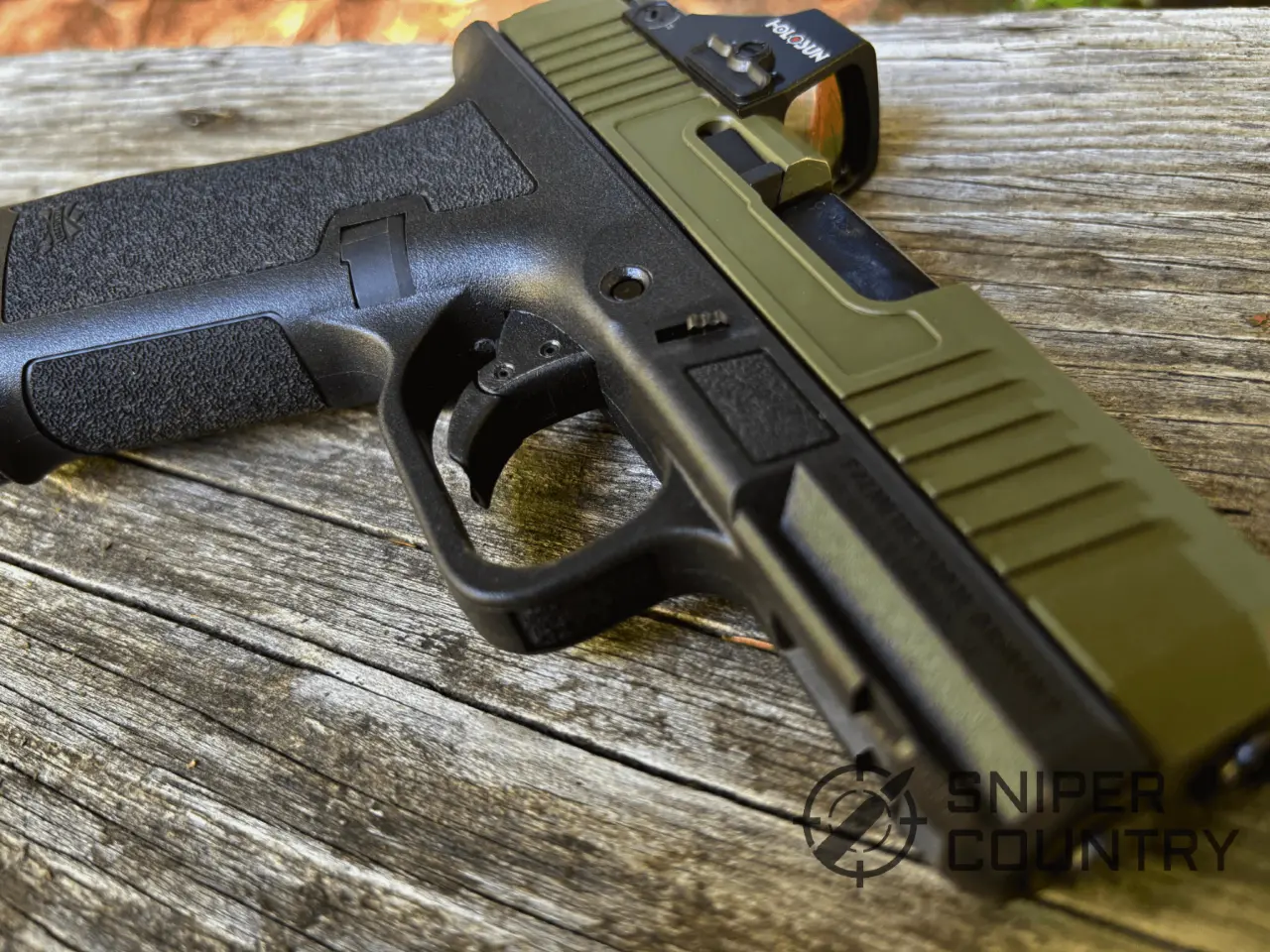
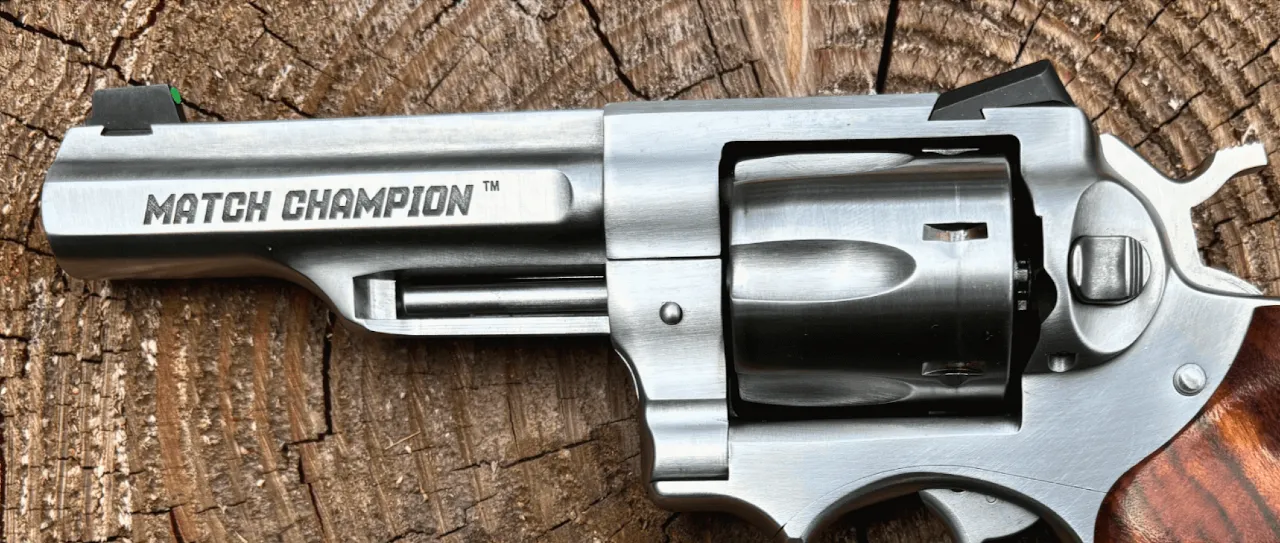



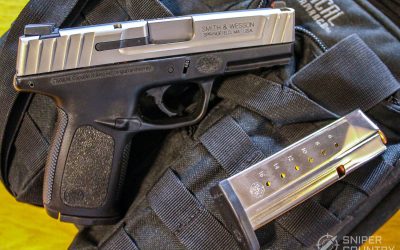
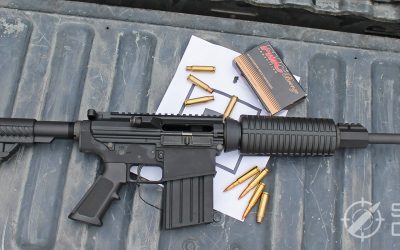


![9mm Glock Models [Ultimate Guide]](https://snipercountry.com/wp-content/uploads/2018/10/Glock-17-vs-Glock-19-vs-Glock-26-vs-Glock-41-vs-Glock-43-WM-400x250.jpg)
![Handgun Caliber Chart [2025 Ultimate Guide]](https://snipercountry.com/wp-content/uploads/2018/10/Handgun-Caliber-Comparison-400x250.jpg)
![Rifle Calibers [Ultimate Guide]](https://snipercountry.com/wp-content/uploads/2018/12/Header-1900-400x250.jpg)



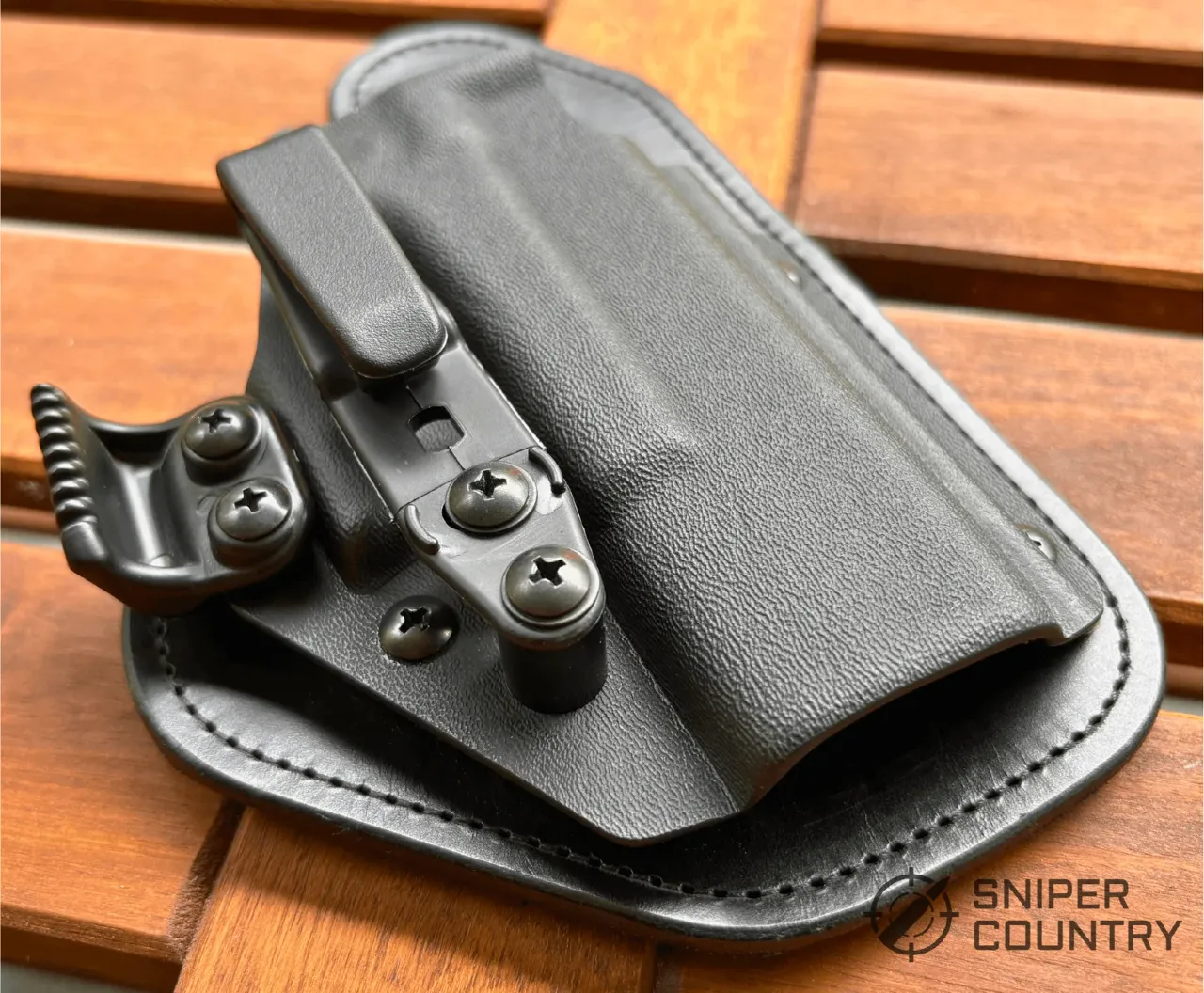


22 Responses
I have just bought an older version in 9mm and am learning to shoot it better. Learn’t quickly that it likes heavy bullets not light ones. My current favourite factory load is Syntek 160gr. Soon I will be starting my hand loading journey.
Peter, good idea about starting to handload to feed your Taurus. An extra-heavy 9mm factory load bullet is not generally easy to find, at least past 147 grains. By handloading, you can get heavier bullets to try. Thanks for writing!
Have both the blue and stainless 5 inch. Dressed them up with zombie grips from Rio Grande grips. Black on stainless and brown grips on blue. Very attractive. No matter where I shoot them, they elicit admiring remarks and inquiries. As accurate or more so as any other 1911 I have. Great price. Just wish I had got the early one in 38 Super. Oh well, lol.
William, maybe they’ll bring back the .38 Super – it’s really popular in some parts of the world. Thanks for writing!
Great article.
I owned a Taurus .45 many years ago. I loved it.
This new one. Your article makes me want to go out tomorrow morning and buy one.
I think I will.
Thanks for all the text messages.
Be
Well …….Mike ~
Michael, let us know how that new Taurus .45 shoots when you get it – thanks for writing!
I have a Taurus Stainless PT1911AR and it is one of the older models. I love this pistol, sure it is a little heavy to wear all the time but that weight helps where it counts, shooting it. Being an old Vietnam Combat Marine I like to push the envelope of a weapon and I start shooting this at 15yds. 25yds., 50yds, 75yds, and out to 100yds. on half body size targets. When i can take a pistol like this and put 6 out of 8 in the body at 100yds. I think the gun is working remarkably well and yes I paid $750 for mine and did some personal tweaking. Trigger pull is dead on at 3lbs. The gun is a beautiful piece of work and a good addition to anyone’s gun collection if they want to own a 1911 45. Thank you Taurus not only do I have your PT1911AR but also have the G2C 9mm which I changed the sights and went to tru glo great little conceal carry piece.
Roger, first, thanks for your service. I am grateful to vets like you. Secondly, sounds like you have it figured out. Are you using factory 230-grain ball? That’s some fancy shootin’! Thanks for writing.
I like the PT 1911 In .45 acp, but it is too heavy to carry concealed in lightweight clothes esp in Las Vegas & Florida. I have had a Walther P-38 9mm, since 1989. I now have my ccw, and put it in my cowboy boots and have it in a pocket holster . It’s now nickel plated with gold trim. It points perfect for me and the grip fits my hand perfect. In W. Germany we went to ourBundesweher sister unit and shot thier handguns and rifles and they shot ours. I won 1st place with the P-38 and 2nd place with the G-3. So I’m very familiar with this handgun. My question is: I’m looking for a “pocket pistol” in 9mm, that fits my hand and isn’t so heavy I can’t put it in my dress pants or coat without dragging them down! What do you suggest? I was at a gunshow recently and saw a SCCY handgun in 9mm. I’d never heard of them but found they are made in Daytona Beach Fla. What do you think? An SCCY, Ruger EC9, or S&W Shield ,or something else. There is a range close by that rents handguns to shoot there, so I thought try, then buy. I’m also looking for something for my wife aslo. Any help would be appreciated! Thank You, Sgt. John LeBrun U.S. Army (Veteran).
Sgt. LeBrun, first, thanks for your service! I truly appreciate what you vets do for us all. Secondly, are you looking for a single-stack or double-stack 9mm? How you answer that will temper my reply to you. I’ll go ahead and mention a couple so you can be thinking. Single stack, have you looked at a Kahr? I owned some of those. They have one of the best triggers out there. You can get one (P series) for around $450-500, or a bit cheaper (C series) for around $350. Not a large difference between the two. You can get capacities from 6+1 to 8+1. These guns are skinny – I carried one in a pocket holster. In terms of double-stack, I like the Sig P365 and want to try the new(er) Springfield Hellcat. The Springer looks like it could grow to be a great seller, at least according to my friends who own gun shops. My Taurus G2C works pretty well, too, and is a bit cheaper. Capacities are 10+1 (365), 11+1 or 13+1 (Hellcat), 12+1 (G2C).
Let us know how your search progresses – thanks for writing!
P.S. – if you can carry a P-38 concealed, I’m impressed – that’s no tiny gun!
My PT1911 is a bit over years old and it came with Heine tritium sights. Like my Taurus 431 44 spl. that I’ve previously mentioned here, the PT1911 has always performed flawlessly. I removed the ambi safety and installed an Ed Brown right thumb only safety with just a little fitting required. I have a 200 gr. Mihec brass Cramer style mold with round, and pentagon HP pins, and flat nose pins. It’s one of my favorite molds. It casts the most accurate bullets I’ve ever fired from both my PT1911 and my Pietta “1858” New Model Army with a conversion cylinder.
-Cal
Calin, glad your Taurus (both of them) is working out for you. That bullet sounds intersesting – I’ve seen the pentagon HP cavity, looks good. Glad that works for you too…thanks for writing!
Thanks for the post. I soured on Taurus about a decade ago, but recently picked up a Taurus TX22, and wowed. Great gun and a great price. I’ve been looking for a 1911 in the $700 to $1200 range and really never gave the PT1911 much thought. The TX22 opened my mind to the possibility, and after reading your post I ordered one today. You are correct it comes equipped out of the box with upgrades that rival its more expensive competitors…and it shoots. Lol. Not ready to give up my Glock and Sig polymers and will be used mostly for recreational shooting. Another reason the price point was attractive. Great review.
Braveheart (love that handle!), I’m glad you’re giving Taurus another chance. There was a time when I shared your original viewpoint – no Taurus guns, please – but I’m past that. I’ve even heard of some gun shop owners who post signs for customers that tell them to avoid Taurus (and a couple other brands) due to their prior sketchy reputation, but I’ve had better luck with them more recently. Hopefully your 1911 and TX will serve you well. Thanks for writing!
Sir, you do a wonderful job objectively reviewing firearms. I have an older PT1911 with a WC sear and springs and it has performed flawlessly for several years. I’m sure I wouldn’t even need to replace anything on the newer model. Thank you for your efforts and blessings to you.
Byron, thanks for the very kind words and the blessing! I’ll take that every time. Glad your 1911 is working so well for you…they’re nice guns! Thanks for writing.
Just wanted to say great review. I am thinking about getting one of these for my first 1911. You definitely made the decision easier. Thank you.
Tanner, thanks for the nice words. I always try to write as if I were on the other side, looking for information. Glad to help. Thanks for writing!
I have the cerakote tungsten grey/black version I found it to be just as accurate as any same price range and some higher very high quality for the buck on . It’s on par with the the same quality or better than there pt92 yes they have made some less than desired guns but they hit this one out of the park
Michael, I agree. When Taurus makes a good gun, it’s a really good gun that is a great value for the money. I’m glad you’re enjoying yours-thanks for writing!
Mike, you got me, I am a 1911 lover since I was a kid, my father was a police officer for over 29 years, he teach me and my brother about the 1911 45 acp, as a matter of fact he had medals all over the place for, pistol, rifle, machingun, 45 Thompson,
My next one will be a Taurus PT 1911. Of course I had them before, thank you Mike, Merry Christmas and happy new Year, hope the best for you and your family.
Vinnie.
Vinnie, thanks for the kind words. With your dad being in law enforcement; you’ve had a firm firearms tradition. The Taurus 1911 is a good gun – hope you have fun with it. I hope you and yours have a wonderful Christmas and New Year’s as well. Thanks for writing!